While many believe that capturing the cosmos' splendor requires the most advanced equipment, some argue that the photographer's skill and familiarity with the night sky are just as crucial. It's a perspective that suggests even with the top cameras, the true essence of astrophotography lies within the expertise and creativity of the individual behind the lens.
We've still compiled a list of the top 5 best cameras for astrophotography to help bring the universe into focus, but we invite you to share your thoughts. Do you think the camera makes the astrophotographer, or is it the other way around?
Leave a comment with your insights and experiences.
Table of Contents
ToggleCanon EOS Ra Astrophotography Mirrorless Camera, Black
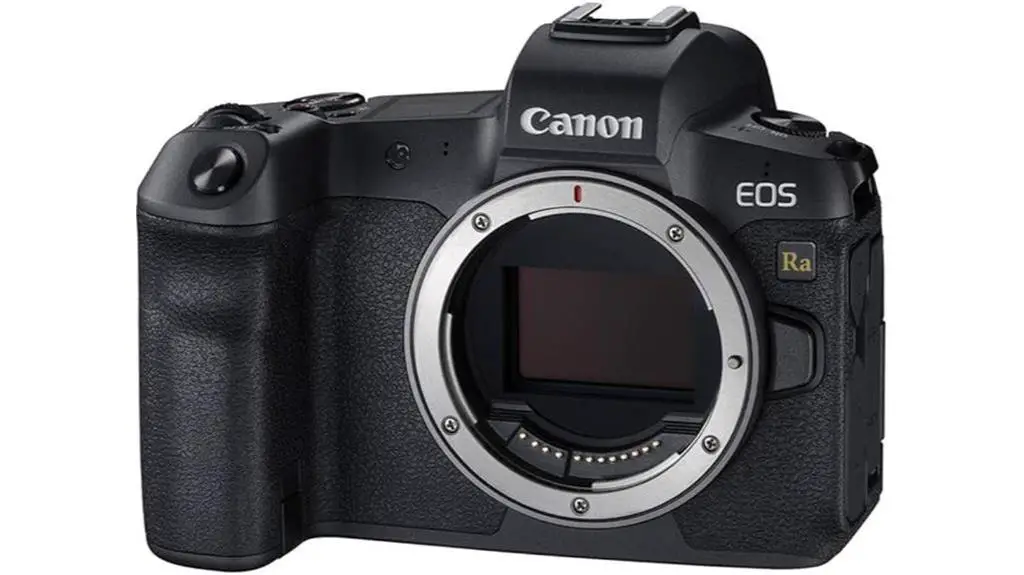
Are you an avid astrophotographer looking for a camera that offers enhanced night sky recording and exceptional sensitivity to capture vivid deep-red hues of nebulae? Then the Canon EOS Ra Astrophotography Mirrorless Camera in Black may be the ideal choice for you.
This camera is equipped with a modified filter for enhanced night sky recording and boasts a 30.3 Megapixel Full-frame CMOS Sensor and DIGIC 8 Image processor for exceptional image quality. It also features Dual Pixel CMOS AF with 5,655 manually selectable AF positions, ensuring precise focus even in low light conditions.
The camera's approximately 4x more transmission sensitivity of hydrogen-alpha (Hα) rays allows for capturing more vivid deep-red hues of nebulae, making it perfect for astrophotography. With 4K 30P capabilities and high ISO performance, this camera enables you to capture the movement of stars across the night sky in clarity and detail.
Best For: Astrophotographers seeking a high-quality camera with enhanced night sky recording capabilities and exceptional sensitivity for capturing vivid deep-red hues of nebulae.
Pros:
- 30.3 Megapixel Full-frame CMOS Sensor and DIGIC 8 Image processor
- Dual Pixel CMOS AF with 5,655 manually selectable AF positions
- 4K 30P with Canon log and 10-bit 4:2:2 HDMI output
Cons:
- Price may be considered high
ZWO ASI533MM-Pro Monochrome Astronomy Camera
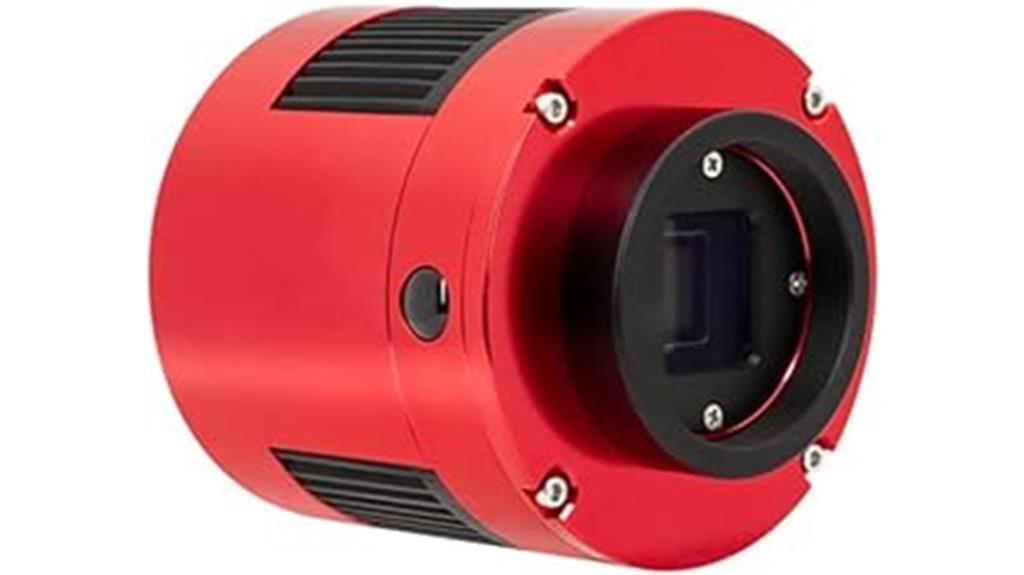
The ZWO ASI533MM-Pro Monochrome Astronomy Camera is an ideal choice for astrophotography enthusiasts seeking high-resolution imaging of deep-sky objects and the Moon and Sun with the use of appropriate filters. With its 9-megapixel resolution and square sensor, this camera excels at capturing stunning images of nebulae, star clusters, supernova remnants, galaxies, and celestial bodies with intricate details. Additionally, it enables the creation of color astronomy images when paired with color or narrowband astronomy filters.
Equipped with TEC cooling, the camera facilitates low-noise imaging by reducing sensor temperature. Its fast USB3.0 transfer rate and compact, lightweight design make it a convenient and efficient tool for capturing the wonders of the cosmos. Compatible with both Mac OS X and Windows, this monochrome astronomy camera offers astrophotography enthusiasts a versatile and powerful imaging solution.
Best For: Astrophotography enthusiasts seeking high-resolution imaging of deep-sky objects, the Moon, and the Sun with the use of appropriate filters.
Pros:
- High-resolution 9-megapixel sensor for capturing detailed images
- TEC cooling for low-noise imaging
- Fast USB3.0 transfer rate and lightweight design for convenience
Cons:
- Additional accessories may be required for optimal results
SVBONY SV105 Telescope Camera, 1.25 inch CMOS Color Electronic Eyepiece
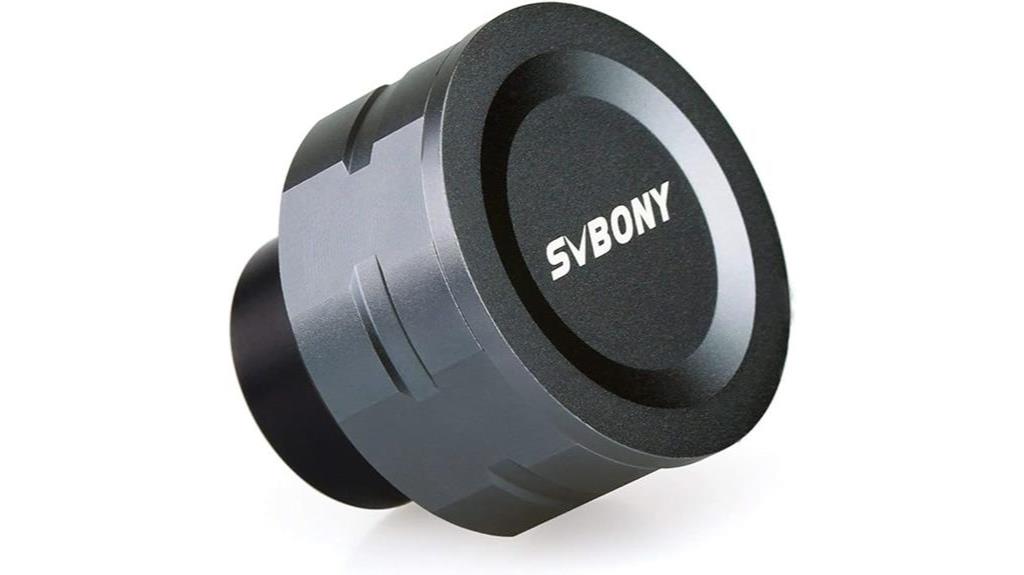
Ideal for beginners in astrophotography, the SVBONY SV105 Telescope Camera offers a user-friendly, plug-and-play experience with no driver required. This basic yet effective camera is suitable for lunar and planetary photography, making it a great starting point for astronomical imaging. Its compatibility with Windows, Linux, and Android systems ensures versatility, while the dark light compensation technology in its image processor enhances image quality. The camera's standard 1.25-inch size allows for compatibility with telescope filters, further expanding its capabilities. While some users have noted software limitations, the SVBONY SV105 camera has garnered positive feedback for its performance, particularly on Linux systems. Overall, its affordability and beginner-friendly features make it an attractive option for those entering the captivating world of astrophotography.
Best For: Beginners in astrophotography looking for an affordable and user-friendly camera for lunar and planetary photography.
Pros:
- Plug-and-play functionality with no driver required
- Compatibility with Windows, Linux, and Android systems
- Dark light compensation technology for enhanced image quality
Cons:
- Software limitations reported by some users
FIBONAX Nova800 Astrophotography Camera for Entry Level Astronomy Enthusiasts
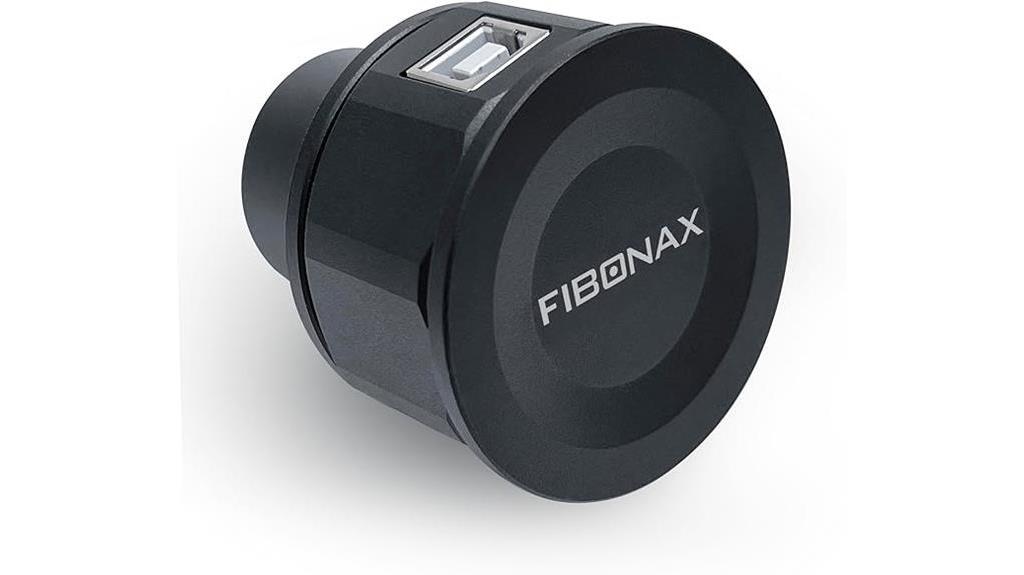
If you're an entry-level astronomy enthusiast looking for an astrophotography camera with a resolution of 3264 * 2448 8M pixels, the FIBONAX Nova800 could be the perfect fit for you.
This camera offers a smooth frame rate suitable for observation and clear images suitable for taking photos. It features dark light compensation technology and lens edge correction technology for real-time and clear images. The FIBONAX Nova800 also comes with professional astronomical software for observation, recording, and sharing. Its Sony high-definition color CMOS image sensor and full aluminum alloy body ensure high-quality images and durability. Additionally, the 1.25-inch standard interface is compatible with universal telescopes, making it convenient for entry-level astronomy enthusiasts.
However, some users have reported compatibility issues with Macintosh systems and mixed reviews about the product's performance, particularly concerning the IR sensor and provided software.
Best For: Entry-level astronomy enthusiasts seeking an easy-to-use astrophotography camera with high-resolution capabilities and compatibility with universal telescopes.
Pros:
- High-resolution 8M pixel camera suitable for both observation and photography
- Dark light compensation and lens edge correction technologies for clear and real-time images
- Professional astronomical software for observation, recording, and sharing
Cons:
- Mixed customer reviews, including reports of compatibility issues with Macintosh systems
SVBONY SV905C Telescope Camera with CMOS Sensor
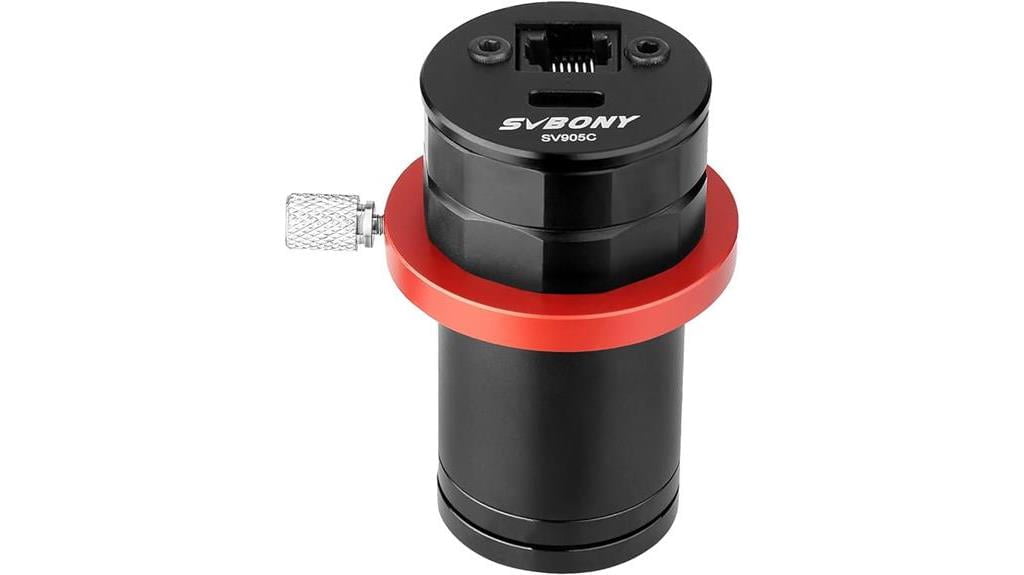
A compact and highly sensitive 1.23-megapixel color camera with 1/3” CMOS 1280×960 sensor is an essential tool for astrophotography enthusiasts seeking precision and versatility in capturing celestial objects. The SVBONY SV905C Telescope Camera features small 3.75-micron pixels, offering high peak QE of 80% and low read noise, ideal for tracking faint guide stars. Its USB 2.0 interface output and ST4 guide star interface make it compatible with various software guide stars and easy to connect to guiding devices.
Additionally, equipped with a CS interface and a CS-C adapter ring, it easily matches CS or C-mount lenses. With a diameter of 1.25 inches, it adapts to different focal length guide lenses and OAG guide stars, further enhancing its adaptability. This camera's snap ring and scale mark enable easy focusing and positioning, making it a valuable asset for astrophotography.
Best For: Astrophotography enthusiasts seeking precision and versatility in capturing celestial objects.
Pros:
- Highly sensitive 1.23-megapixel color camera
- Small 3.75-micron pixels with high peak QE of 80%
- Compatible with various software guide stars and easy to connect to guiding devices
Cons:
- Not compatible with Mac-based astrophotography setup
Factors to Consider When Choosing Cameras for Astrophotography
When choosing a camera for astrophotography, there are several key factors to consider.
You'll want to pay attention to the camera's resolution, sensor size, and low light performance, as these will greatly impact the quality of your photos.
Additionally, it's important to ensure that the camera is compatible with telescopes and to consider the cooling technology to minimize noise in long exposure shots.
Camera Resolution
Considering camera resolution is crucial when selecting the right equipment for astrophotography, as it directly impacts the level of detail captured in celestial images. Higher resolution cameras can capture finer details in celestial objects, making them ideal for astrophotography.
Additionally, higher resolution allows for more flexibility in cropping and enlarging images without losing quality. However, it's important to note that higher resolution cameras may produce larger file sizes and require more storage space and processing power.
Therefore, it's essential to consider the balance between resolution, file size, and your specific astrophotography needs when choosing a camera. By carefully evaluating these factors, you can select a camera that best suits your astrophotography goals while maximizing the level of detail captured in your images.
Sensor Size
When choosing a camera for astrophotography, your focus shifts from camera resolution to sensor size as it directly impacts the field of view and low-light performance of the camera. A larger sensor size captures more light, resulting in better image quality in low-light conditions. For improved performance in capturing celestial objects, consider a larger sensor size.
Additionally, larger sensor sizes allow for better control over depth of field and contribute to overall image quality. It's important to note that different sensor sizes impact the focal length and effective focal length of the lens, affecting the composition and framing of astrophotography shots.
Therefore, when selecting a camera for astrophotography, prioritize sensor size to enhance the quality and capabilities of your celestial photography.
Low Light Performance
To ensure optimal performance in capturing detailed images of faint celestial objects, prioritize the low light capabilities of the camera when selecting equipment for astrophotography. Look for cameras with high ISO capabilities and low noise, as these are crucial for astrophotography in low light conditions.
The ability to capture and pinpoint dim stars, nebulae, and other celestial objects in low light is essential for producing stunning astrophotography images. Additionally, consider cameras with enhanced sensitivity to specific wavelengths, such as hydrogen-alpha (Hα) rays, to accurately represent deep-red hues in nebulae.
TEC cooling in cameras can also be beneficial for reducing sensor temperature and minimizing noise during low light imaging.
Compatibility With Telescopes
When selecting a camera for astrophotography, ensure its compatibility with your specific telescope model and brand. Consider adapter requirements for connecting the camera to the telescope and matching sensor size and resolution with the telescope's capabilities for optimal image quality.
Look for cameras with T-thread or other standard connections to easily attach them to telescope accessories. Also, consider whether the camera's weight and dimensions are suitable for your telescope setup and mounting system.
Cooling Technology
Considering cooling technology is crucial when selecting a camera for astrophotography. It plays a significant role in reducing sensor temperature and minimizing electronic noise during long-exposure imaging. Some astronomy cameras utilize cooling technology, such as TEC cooling, to lower the sensor temperature. This enables low-noise imaging of celestial objects and is particularly beneficial for capturing high-resolution images of deep-sky objects. It also enhances overall camera performance. Cooling systems are essential for reducing sensor temperature, especially in long-exposure astrophotography, where low temperatures are crucial for minimizing electronic noise. By incorporating cooling technology, astronomy cameras can produce clearer and more detailed images of the cosmos. This makes them a valuable asset for astrophotography enthusiasts aiming to capture stunning celestial details.
Warranty and Support
When selecting a camera for astrophotography, it's important to thoroughly assess the extent and coverage of the warranty, including any limitations or exclusions. Look for available support options such as customer service hotlines, online forums, or tutorials for troubleshooting and guidance. Check if the warranty covers potential issues specific to astrophotography, such as sensor sensitivity or cooling mechanisms.
Assess the ease of accessing warranty information and support, including whether it's readily available from the manufacturer or retailer. Additionally, consider the voluntary return guarantee or price matching policies offered by the seller.
Ensuring comprehensive warranty coverage and accessible support options will provide you with peace of mind and assistance should any issues arise with your astrophotography camera.
Conclusion
So there you have it – the top 5 cameras for astrophotography that will help you capture the beauty of the cosmos in stunning detail.
Whether you're a beginner or a seasoned astronomy enthusiast, there's a camera on this list that will suit your needs.
Consider the factors mentioned when choosing a camera, and get ready to explore the universe through the lens of your new astrophotography camera!
